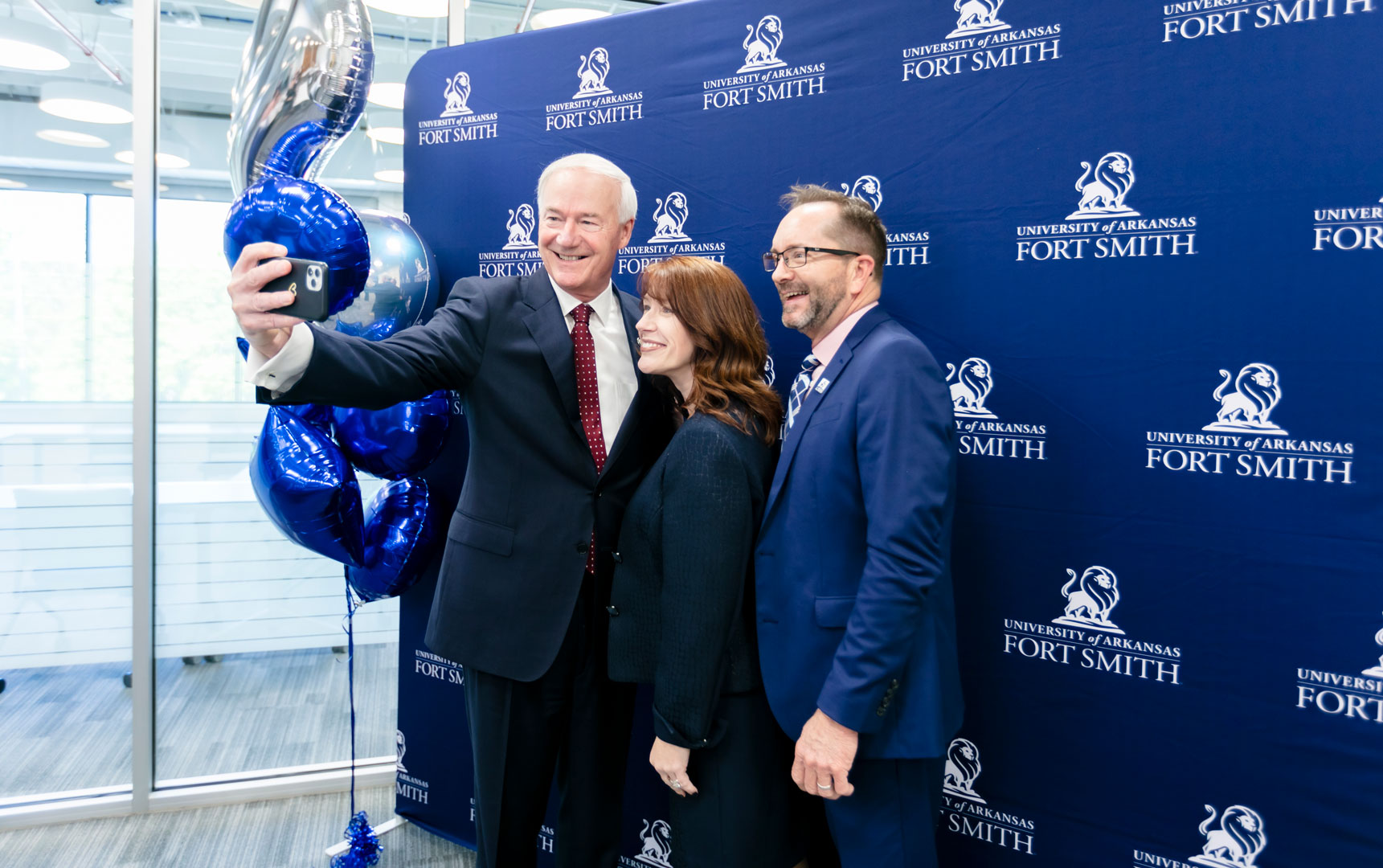
CELEBRATION: Arkansas Gov. Asa Hutchinson takes a selfie with UAFS Chancellor Dr. Terisa Riley and Kendall Ross, executive director of the UAFS Center for Economic Development.
Entrepreneurship, Small Business Today's Economy Drivers
It’s a mouthful, but the Arkansas Small Business and Technology Development Center, partnered with the University of Arkansas - Fort Smith, already has impacted the local economy.
“The economic impact of the ASBTDC in the River Valley for all of 2021 was about $1.3 million,” Bill Sabo, the center’s regional director, said. “So far this year (August 2022), it’s been $6.4 million, and I think there will be a couple more before the end of the year.”
The ASBTDC, with funding from the US Small business Administration, works with small businesses from inception to reinvention and everything in between.
“A misconception people have is that we work only on startups. We work with every kind of business imaginable. You could have a dream you want to explore, or you are looking to add a second location, or you need capital to add new machinery; we’ll work with you,” Sabo said.
In early 2021, UAFS announced that it received a $78,000 grant to launch the newest ASBTDC regional office, in Fort Smith. Statewide, regional offices partnered with colleges and universities offer confidential, free services to businesses with 500 or fewer employees.
Sabo said the center is the brainchild of Dr. Latisha Setlege, Dean of the College of Business & Industry. She said that was giving her too much credit, but she acknowledged her input.
“It is true that I took the lead when the state ASBTDC office in Little Rock approached UAFS with the opportunity to submit a proposal for a new center. The state office wanted to expand its footprint by opening some new offices around the state, and they identified Fort Smith as a possibility,” she said.
“At the time, the Bakery project was just picking up steam. Senior leadership had decided that both the Center for Business and Professional Development and Family Enterprise Center would be located there. I saw the addition of an ASBTDC office as a natural extension of our regional economic development goals.”
Both Settlage and Sabo credit the vision of UAFS Chancellor, Dr. Terisa Riley, with adding impetus for the project. It was Riley who, while touring the UAFS part of the Bakery space, saw the unclaimed area and said, “I want it all.”
Sabo thinks the location is ideal.
“It’s a game-changer,” he said. “It’s off-campus. It’s less intimidating. Nobody will see you, and there’s plenty of parking. We will offer 16 workshops and panel discussions in this space this year.”
The time is right, too, he said.
Sabo believes entrepreneurship is now the way to spur economic development. Later this year, he will have Entrepreneurial Development Professional certification. “Professionals with this certification basically help to create an infrastructure for cities to make entrepreneurs successful,” he said.
“The ASBTDC office allows us the opportunity to support every business regardless of its stage of development,” Settlage said. “Aspiring entrepreneurs and small businesses can find support within the ASBTDC to help with concept development, market research, and financial planning.”
Added to one-on-one help, the center offers workshops and panel discussions. A panel of women in business got stand-out reviews. A panel of Hispanic business people, conducted in Spanish, was well attended.
Already the center has begun to integrate UAFS business faculty into programs. A recent one-hour accounting session was well received if frightening to some of the new and would-be new business owners, he said with a laugh.
Sabo speculated about the next step for the ASBTDC.
“There is so much expertise here, not just in the business faculty. Someone might do a session on design with an easy program like Canva,” Sabo said.
“What I am hoping to see in the next few years is that business majors and graphic design majors would work with us in their final year of school and have the resources to start a business by the end of the year. I’ve already had three students who have become entrepreneurs.”
- Tags:
- CED
- Bell Tower
- Community
